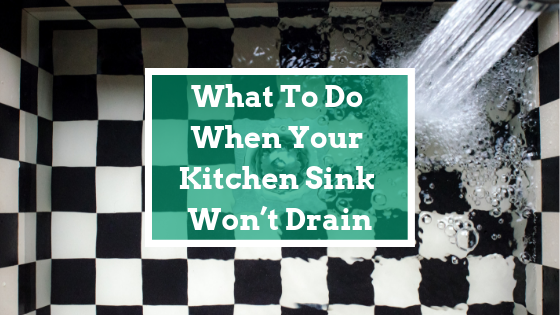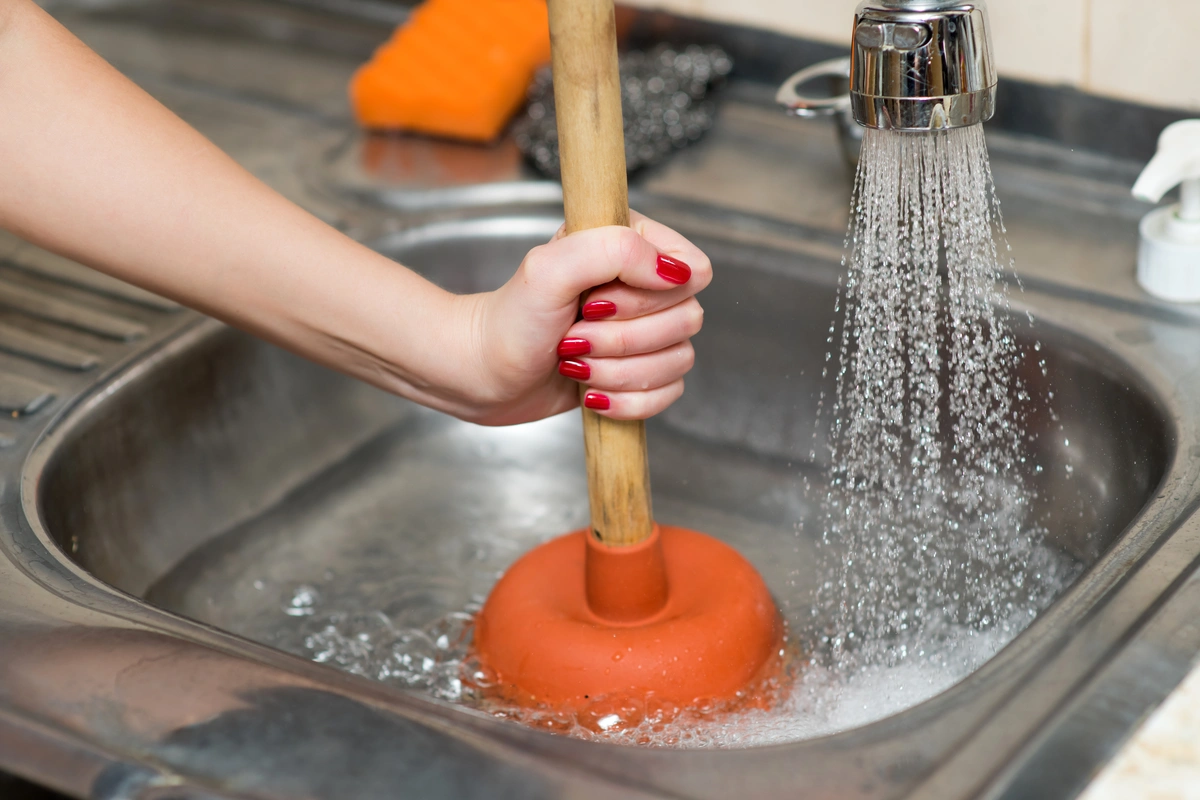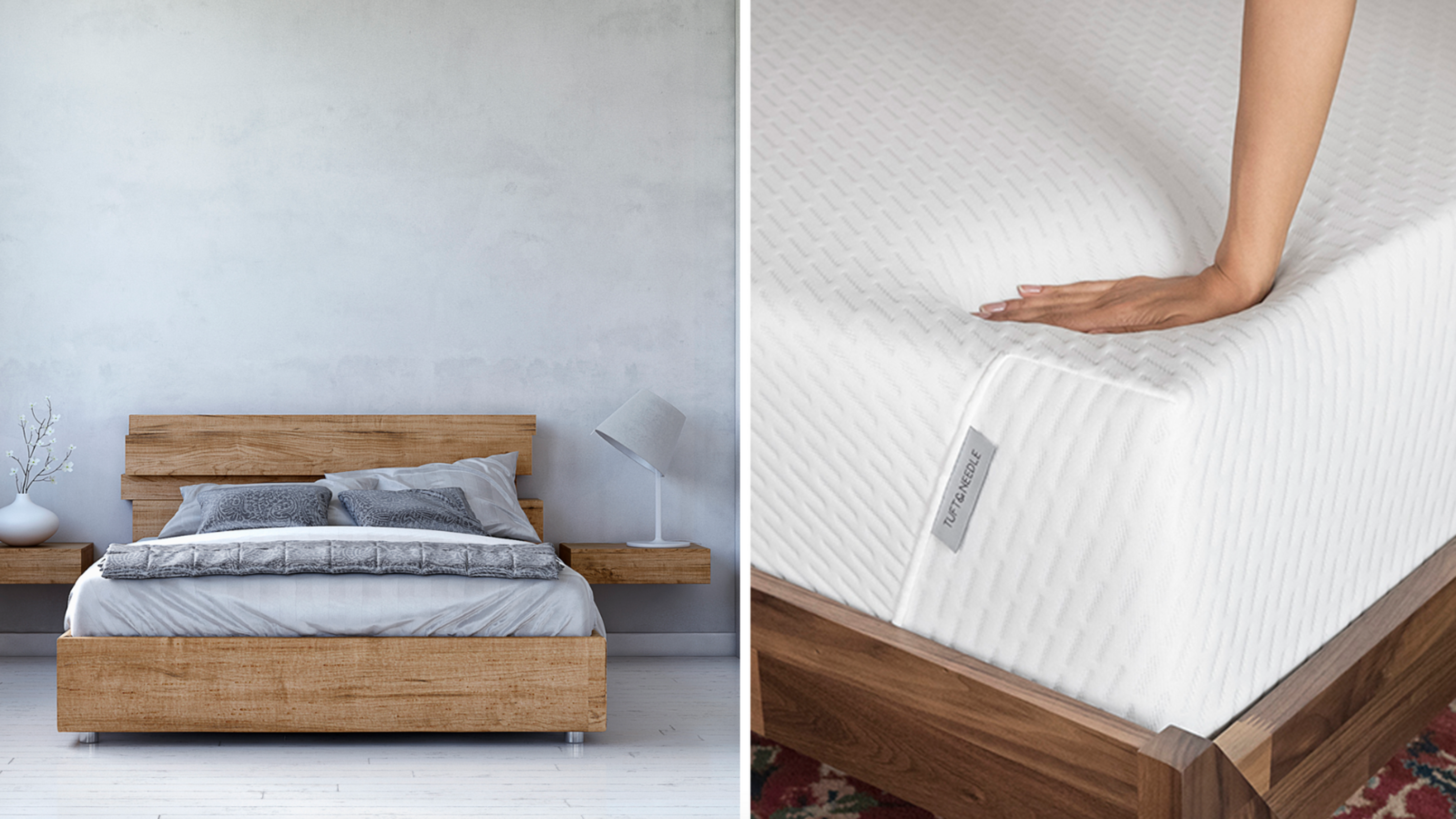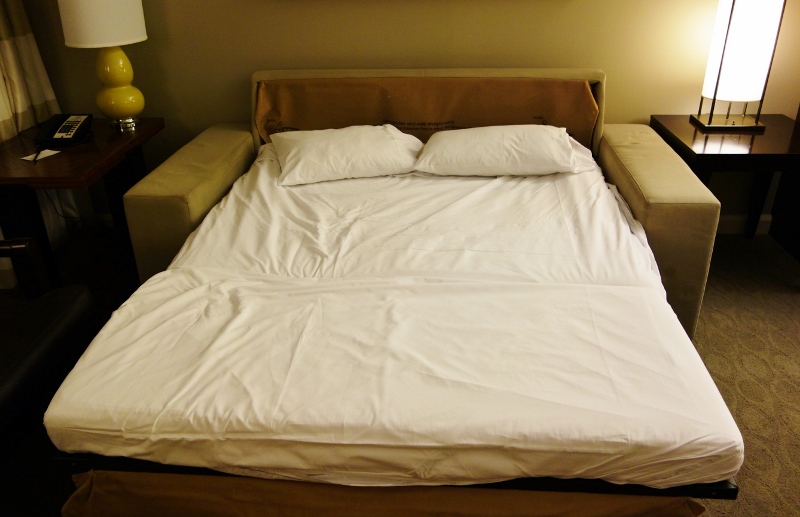Unclog a Kitchen Sink
If you're dealing with a clogged kitchen sink, you're not alone. This is a common household problem that can be frustrating and inconvenient. Luckily, there are some simple steps you can take to unclog your kitchen sink and get the water flowing freely again.
The first step is to determine the cause of the clog. If you notice that water is backing up in your sink, it's likely that there is a blockage somewhere in the drain. This could be caused by food particles, grease, or other debris that has built up over time.
To unclog your kitchen sink, you'll need a plunger, a pair of rubber gloves, and a drain snake. You may also want to have some baking soda and vinegar on hand for a natural, DIY solution.
Start by plunging the sink drain to see if you can dislodge the clog. If this doesn't work, put on your rubber gloves and try using a drain snake to remove the blockage. If you don't have a drain snake, you can make your own by straightening out a wire hanger and using it to push through the clog.
If neither of these methods work, you can try pouring a mixture of baking soda and vinegar down the drain. Let it sit for a few minutes before flushing it with hot water. This can help break down any grease or debris that is causing the clog.
Once your kitchen sink is unclogged, be sure to run hot water down the drain for a few minutes to help clear out any remaining residue. You can also prevent future clogs by regularly using a mixture of baking soda and vinegar to keep your drains clean and clear.
How to Fix a Clogged Kitchen Sink
A clogged kitchen sink can be a major inconvenience, but it's not something you have to live with. There are several methods you can use to fix a clogged kitchen sink and get the water draining properly again.
If you have a double sink, start by plugging the other side with a wet cloth or sink stopper. This will help create pressure and make it easier to plunge the clogged side. Use a plunger to try and dislodge the blockage. If this doesn't work, move on to using a drain snake or making your own with a wire hanger.
If these methods don't work, you can try using a chemical drain cleaner. However, these can be harsh and harmful to your pipes, so use them sparingly and follow the instructions carefully.
If you prefer a more natural approach, you can use a mixture of baking soda and vinegar to break down the clog. Let it sit for a few minutes before flushing it with hot water. This can be an effective and environmentally-friendly solution.
Remember to always run hot water down the drain after using any method to help clear out any remaining debris. And be sure to properly dispose of any chemicals or debris to prevent future clogs.
Kitchen Sink Won't Drain
If your kitchen sink won't drain, it's likely due to a clog somewhere in the pipes. This can be a frustrating problem, but it's usually fixable with some simple DIY methods.
The first step is to try plunging the sink drain. If this doesn't work, try using a drain snake or a homemade wire hanger snake to dislodge the clog. You can also try using a chemical drain cleaner, but be sure to follow the instructions carefully and use it in a well-ventilated area.
If these methods don't work, you may need to remove the trap under the sink to access the clog. This is a bit more involved, but if you're comfortable with basic plumbing, you can try this method. Just be sure to have a bucket ready to catch any water that may spill out.
Once you've removed the trap, you can use a wire hanger or a plumbing snake to clear out the clog. Then, reassemble the trap and run hot water down the drain to flush out any remaining debris.
If you're not comfortable with these DIY methods, it's best to call a professional plumber to properly diagnose and fix the problem.
How to Unclog a Kitchen Sink with Standing Water
If your kitchen sink is completely backed up and there's standing water in the basin, it's important to act quickly to prevent any potential flooding or water damage. Here are some steps you can take to unclog a kitchen sink with standing water.
Start by scooping out as much standing water as you can with a cup or bucket. This will make it easier to access the drain and work on unclogging it.
Next, use a plunger to try and dislodge the clog. If that doesn't work, you can try using a drain snake or a homemade wire hanger snake to remove the blockage.
If these methods don't work, you can try using a chemical drain cleaner, but be sure to follow the instructions carefully and take the proper safety precautions.
Once the clog is cleared, be sure to run hot water down the drain for a few minutes to help clear out any remaining debris. And remember to regularly clean your drain to prevent future clogs.
Kitchen Sink Drainage Problems
If you're experiencing issues with your kitchen sink draining properly, it's likely due to a clog or blockage somewhere in the pipes. Here are some common problems that can cause kitchen sink drainage issues and how to fix them.
Food particles and grease are the main culprits for clogged kitchen sinks. Be sure to avoid putting large amounts of food down the drain and always scrape plates and pots into the trash before washing them.
If you have a garbage disposal, be sure to run it regularly and use plenty of water to flush out any debris. You can also freeze vinegar ice cubes and grind them in the disposal to help clean and freshen it.
Another common cause of drainage problems is a clogged or damaged drain pipe. If the clog is further down the pipe and can't be reached with a plunger or snake, you may need to call a professional plumber to properly diagnose and fix the issue.
Regularly cleaning your drains with a mixture of baking soda and vinegar can help prevent future clogs and keep your kitchen sink draining smoothly.
How to Fix a Slow Draining Kitchen Sink
A slow draining kitchen sink can be a nuisance, but it's usually an easy fix. Here are some simple steps you can take to fix a slow draining kitchen sink.
Start by removing any visible debris or buildup from the drain. You can use a pair of tweezers or a small brush to clean out any hair, food particles, or other debris that may be causing the slow drain.
You can also try using a mixture of baking soda and vinegar to break down any remaining buildup. Let it sit for a few minutes before flushing it with hot water.
If the slow drain is still an issue, you may need to use a plunger or a drain snake to dislodge the clog. If this doesn't work, you may need to remove the trap under the sink and clean it out.
Regularly cleaning your drain and using a hair catcher can help prevent future slow drains.
Kitchen Sink Water Changes Sides
Have you ever noticed that the water in your kitchen sink seems to change sides? This can be a strange phenomenon, but it's usually due to a clogged or improperly installed drain. Here's how to fix it.
Start by checking the drain pipe and trap under the sink to make sure they are properly installed and not clogged. If they are, you may need to remove the trap and clean it out.
If the drain is clear and properly installed, the issue may be with the vent pipe on the roof. This pipe helps regulate air pressure in the drain and if it's clogged or damaged, it can cause the water to change sides in the sink.
If you're not comfortable checking or fixing the vent pipe, it's best to call a professional plumber to properly diagnose and fix the issue.
How to Fix a Kitchen Sink that Won't Drain
If your kitchen sink won't drain at all, it's likely due to a clog or blockage somewhere in the pipes. Here are some steps you can take to fix a kitchen sink that won't drain.
Start by removing any visible debris or buildup from the drain. You can use a pair of tweezers or a small brush to clean out any hair, food particles, or other debris that may be causing the clog.
If that doesn't work, try using a plunger or a drain snake to dislodge the clog. If these methods don't work, you may need to remove the trap and clean it out.
If that still doesn't fix the issue, the clog may be further down the pipe and you may need to call a professional plumber to properly diagnose and fix the problem.
Remember to regularly clean your drains and avoid putting large amounts of food or grease down the drain to prevent future clogs.
Kitchen Sink Drainage Issues
Dealing with drainage issues in your kitchen sink can be a frustrating and messy problem. Here are some common issues that can cause drainage problems and how to fix them.
One of the most common causes of drainage issues is a clogged drain. This can be caused by food particles, grease, hair, and other debris that has built up in the pipes. Regularly cleaning your drains can help prevent clogs and keep your sink draining smoothly.
If the clog is further down the pipe and can't be reached with a plunger or snake, you may need to call a professional plumber to properly diagnose and fix the issue.
Another cause of drainage issues is a damaged or improperly installed vent pipe on the roof. This pipe helps regulate air pressure in the drain and if it's clogged or damaged, it can cause drainage problems. It's best to call a professional plumber to properly fix this issue.
In some cases, the drainage issue may be with the sink itself. If the sink is not properly installed or sealed, it can cause problems with draining. It's best to consult a professional to properly install or repair the sink.
How to Clear a Clogged Kitchen Sink Drain
A clogged kitchen sink drain is a common household problem that can be frustrating and inconvenient. Here's how to clear a clogged kitchen sink drain and get the water flowing freely again.
Start by removing any visible debris or buildup from the drain. You can use a pair of tweezers or a small brush to clean out any hair, food particles, or other debris that may be causing the clog.
Next, try using a plunger or a drain snake to dislodge the clog. If these methods don't work, you may need to remove the trap and clean it out.
If the clog is still an issue, you can try using a chemical drain cleaner, but be sure to follow the instructions carefully and use it in a well-ventilated area.
Regularly cleaning your drains and avoiding putting large amounts of food or grease down the drain can help prevent future clogs.
Why a Clogged Kitchen Sink Can Change the Design of Your Entire Kitchen

Kitchen sinks are an essential part of any kitchen design, providing a functional and convenient space for washing dishes, preparing food, and disposing of waste. However, when your kitchen sink won't drain and water begins to change sides of the sink, it can not only be frustrating but also impact the overall design of your kitchen.

Firstly, a clogged kitchen sink can disrupt the flow of your kitchen. Flow is an important concept in house design, referring to the smooth movement and organization of space. When water is unable to drain properly from your sink, it can create a stagnant and messy environment. This not only makes it difficult to use the sink but also affects the efficiency of your kitchen tasks.
Moreover, a clogged kitchen sink can also affect the cleanliness and hygiene of your kitchen. Standing water can become a breeding ground for bacteria and can also cause unpleasant odors. This not only poses a health risk but also affects the overall aesthetic of your kitchen. It can make your kitchen appear dirty and uninviting, which is not ideal for a space that is often the heart of the home.
In addition, a clogged sink can also lead to potential structural damage to your kitchen. Structural damage can refer to any damage to the physical structure of a building, such as the walls or floors. When water is unable to drain properly, it can overflow and seep into surrounding surfaces, causing water damage and potentially weakening the structure of your kitchen.
To avoid these issues, it is important to address a clogged kitchen sink as soon as possible. This may involve using a plunger or drain cleaner to clear the blockage, or even calling a professional plumber for more severe cases. By keeping your kitchen sink in good working condition, you can maintain the flow, cleanliness, and structural integrity of your kitchen design.
In conclusion, a clogged kitchen sink may seem like a small issue, but it can have a significant impact on the overall design of your kitchen. By understanding the importance of flow, cleanliness, and structural integrity in house design, you can see how a clogged sink can disrupt these aspects. Addressing a clogged sink promptly can help maintain the functionality and aesthetics of your kitchen, ensuring it remains a welcoming and efficient space for all your cooking and cleaning needs.
/plumber-unclogging-kitchen-sink-169270382-5797a9355f9b58461f27f024.jpg)







:max_bytes(150000):strip_icc()/how-to-unclog-a-kitchen-sink-2718799_sketch_FINAL-8c5caa805a69493ab22dfb537c72a1b7.png)

































































:max_bytes(150000):strip_icc()/water-overflowing-in-kitchen-sink-200553937-001-5797e6335f9b58461f5a6736.jpg)




/sink-pipe-under-wash-basin-119001607-75542e154b364e7bb52032249f293908.jpg)






















:max_bytes(150000):strip_icc()/freshen-and-unclog-drain-with-baking-soda-1900466-22-bbf940b70afa4d5abef0c54da23b1d3f.jpg)








